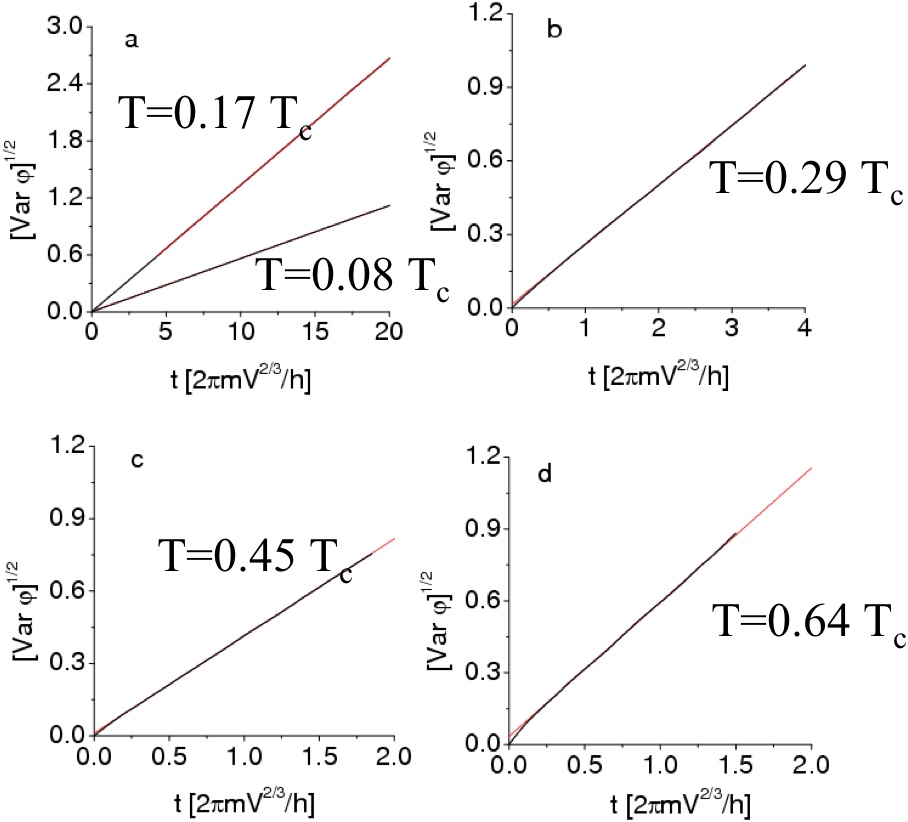Finite temperature properties and Phase Coherence of a BEC
Phase coherence is one of the most important properties of Bose-Einstein condensates that can be exploited in different applications including metrology, atomic interferometry and quantum information.
A first fundamental problem is that of the coherence time of a three dimensional condensate at thermal equilibrium. Almost pure condensates can be produced in ultra-cold atomic samples. However, the remaining thermal fraction of atoms represents a fluctuating environment that, in presence of interactions, perturbs the condensate phase. Therefore, the variance of the phase accumulated by the condensate during a given time interval grows with time. When the accumulated phase variance is of order unity, phase coherence is lost.
There have been works in the literature, based on a quantum-optics inspired approaches, predicting that the phase of a condensate in thermal equilibrium would undergo diffusion, the phase variance growing linearly in time [1]. A different conclusion was reached in [2], where, based on a many-body approach, the authors predicted a ballistic spreading of the condensate phase, the condensate phase variance growing quadratically in time. However, in [2] the phase spreading was calculated within the Bogoliubov approximation, and interactions among Bogoliubov modes, such as Beliaev-Landau processes, were neglected.
From our side, we attack this problem from two directions. Numerically, with a classical field approach, and analytically, testing our analytical theory on the classical field play-ground before generalizing it to the true quantum case.
We show that the spreading of the phase is ballistic and it is closely related to the fluctuations of energy in the prepared initial state. We calculate analytically the coefficient of the time spreading of the condensate phase by using a quantum extension of the classical concept of ergodicity in the system [3].

|
We have also studied
the problem of the condensate phase spreading in special conditions in which the
fluctuations of energy in the initial state would be suppressed that is when the system is at equilibrium
in the micro-canonical ensemble.
Experimentally this could be achieved by starting with a very cold sample and then giving a fixed amount of energy
to the system, or following in the time a given realization of the experiment. In this case the condensate phase undergoes
a real phase diffusion [4], [5].
References
[1] R. Graham, Phys. Rev. Lett. Vol.81, 5262 (1998).
[2] A.B. Kuklov, J.L. Birman, Phys. Rev. A Vol.63, 013609 (2001).
[3] A. Sinatra, Y. Castin, E. Witkowska, Phys. Rev. A Vol. 75, 033616 (2007).
cond-mat/0610644
[4] A. Sinatra, Y. Castin, Phys. Rev. A Vol. 78, 053615 (2008).
arXiv:0808.1501
[5] A. Sinatra, Y. Castin, E. Witkowska, Phys. Rev. A Vol. 80, 033614 (2009).
arXiv:0907.1025.
Back to Alice Sinatra Reserach

